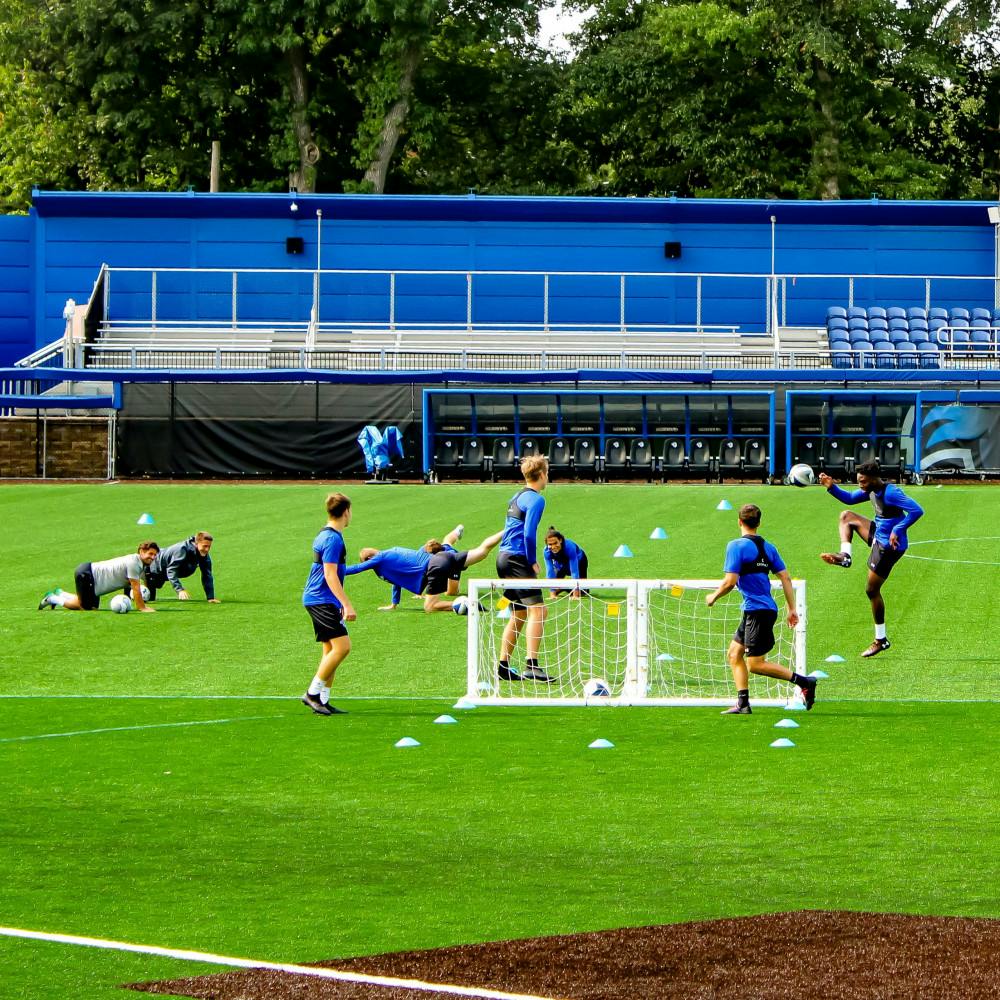The sports world changed drastically after the initial spread of COVID-19 in March. Since then, professional sports leagues have shifted to playing in empty stadiums and college athletics programs have postponed all fall sports—including the Big East.
However, student-athletes returned to Seton Hall in early August to continue training with their teams prior to the conference-wide postponement of fall sports. For the men’s and women’s soccer teams, they were just a few days away from starting preseason before the Big East voted against holding fall sports competitions this year.
It was frustrating news for both teams to hear. Still, men’s soccer coach Andreas Lindberg and women’s coach Ciara Crinion said the players who have returned are also excited to be back on the field practicing and being together again.
Lindberg’s team was hit hardest by the shift to HyFlex learning at Seton Hall, with 10 of his players opting to stay in their respective home state or country for the semester. Crinion’s team had one player defer the option to return this semester, and the lack of a full squad has led to a few changes during the men’s practice sessions.
“A lot of the focus is on individual development, and we’re trying to get the individual player to become better,” Lindberg said. “If that can happen throughout all 19 players that are here, then we’ll have a better team because of it.”
Training sessions are focused on the broader areas of how Lindberg wants his team to play. He said there has been more focus on the team’s defensive shape and how they want to move in possession, but the player-specific instructions lack purpose to practice with a third of their team missing.
Lindberg added that the players who opted to remain home for the semester or defer the semester entirely are training individually. With the team returning in the best physical condition that Lindberg’s seen in his three years at Seton Hall, he said he is confident that those who are not on campus will continue training for when they return.
Throughout the summer, both teams connected with their players via Zoom or Microsoft Teams to host group workout sessions or team talks. Crinion said each player’s individual situation was assessed in terms of resources to continue training and working out before her team put together routines for them to follow before coming back in August.
An added complexity of this season has been handling the introduction of the teams’ new recruitment classes. Both teams have brought in a combined 18 new players with 10 being freshmen new to both the college scene and the competitiveness of college athletics.
“We look at it as an opportunity for [the freshmen] to get a feel for the environment and train a lot more,” Crinion said. “There’s a different opportunity where they get to learn more about their teammates, our style of play, their responsibilities and what the expectations are.”
On the men’s side, Lindberg said he was disappointed that he was unable to put together his usual team bonding trips this season. With seven incoming freshmen, the experiences would have helped with their integration into the team, but he said they are getting along well with those who are here through the general happiness to be back on the field training.
The leadership of the seniors from both teams has been a bright spot in helping the newcomers as well as the returning players adjust to the current conditions. Even with some set to graduate in December, Lindberg and Crinion said they have been impressed with their players’ abilities to focus on the bigger picture of the team and working through the pandemic safely.
“At the end of April, you think the world is going to end,” Lindberg said. “June, July, you’re hopeful for a season, and it’s just an emotional roller coaster for everybody. The players are dealing with it pretty well, and we’re staying really positive.”
Justin Sousa can be reached at justin.sousa@studetn.shu.edu. Find him on Twitter @JustinSousa99.





